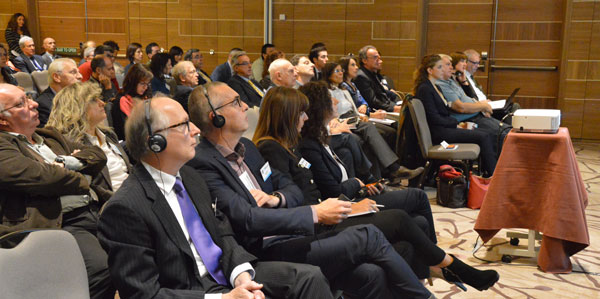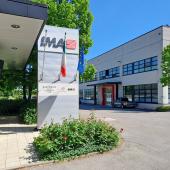A day to understand something more about NIAS
The “Non Intentionally Added Substances” were the subject of the key international event entitled “1st European Food Contact NIAS Infoday - A complete overview on NIAS”. Stefano Lavorini

Organized by the R&D team of Manucor SpA, it was held in Milan October 11 at the Hilton Hotel, via Galvani and intended offering an all-round vision on the subject, starting from the normative fields up to the risk evaluation and the studies, to reach specific case studies.
The emerging issue of NIAS, as difficult as it is topical to the present, involves and affects both plastics processors as well as printers of packaging materials for the food industry.
The event, organized by Manucor, was attended by high-profile speakers, professionals in technical and scientific fields, enabling the exploration of the subject while highlighting interesting innovations in the field of food contact materials.
It can be said that everyone was there. At least all those known in the industry, producers, processors and users who, since the "last century", have dealt full-time with food packaging.
The hall was packed from start to finish of procedures, thanks to the subject but also to an efficient and attentive organization.
The proceedings were opened by Carlo Ranucci, CEO of Manucor, a life dedicated to the world of BOPP, who did the honors and highlighted the effort that his company continues to make, thanks to the expertise of the people who work there, to be leading edge in the production of bi-oriented polypropylene production for packaging. He then underlined the constant attention to the quality of the film, which has led the Sessa Aurunca (CE) based company to install surveillance cameras on all its cutters, with the aim of reducing defectiveness as much as possible.

But let us come to the chronicle of the event, adding that the considerations of Armando Vaccaro, R&D manager of Manucor, and whose commitment to a greater degree led to success of the event, are set out in full in the related article "Getting to know NIAS".
Patrizia Fava and Silvia Gigliano (UNIMORE Food Safety Dept.) talked about food safety and food contact, in particular regarding the vexed question of the use of recycled materials for the production of food containers.
Fava cited the role of the universities, between their educational mission and that of technology transfer, and then framed the issue of food safety, the source of contaminants and the “prejudiced” suspicion which often falls on packaging. Both speakers then reported an actual case, featuring the verification of the food suitability of a thermoformed multilayer PET container with recycled polymer central layer, that highlighted the importance of controlling the production process and subjecting the facilities to a systematic maintenance program.
Elisabetta Silvestrini and Ilaria Boffa (TÜV Group) intervened on undesired migration from packaging. After having outlined the regulatory framework on NIAS and the pH laboratory approach to the analysis of these contaminants, they brought to public attention the study involving four films produced by Manucor. The screening tests were designed to assess the presence of semi-volatile, volatile and non-volatile NIAS substances: result, all the molecules identified were in quantities far below the legal limits.
Coun and Marcel Bosma (Sabic) went directly to the point: looking at the possible development of European legislation and considering the EFSA’s orientation on the subject, they questioned the current approach to the problem of NIAS. Figures to hand, it appears too difficult and expensive, and hence an innovative solution that offers greater balance between cost, risk and effort, is required for the future
Fabio Testoni (Basell Polyolefine Italia) placed the emphasis on the oligomers that are unintentionally formed during the curing process, and the various analysis techniques, with many details and examples. Result: to characterize these substances, which have different molecular weights, a combination of different analytical methods and different extraction procedures is needed.
Olga Eichhorn (Constab Polyolefin Additives) decried the legislative jungle, slogans and scandals that create a disturbing confusion that can only be countered by working to improve knowledge, product quality, communication between the actors in the chain. She also made references to the specific features of the masterbatch product and company policy, aimed at developing and implementing new analytical methods to avoid contamination, selecting and verifying raw materials and ever developing new partnerships.
Valter Rocchelli (Ircpack), as a timehonored "gaschromatografer" stated that prevention is better than curing. Firstly we need to know the nature of the potential contaminant to assess the risk of toxicological damage. For screening analyses, he suggests the use the gas chromatography coupled with mass spectrometry for a semi-quantitative assessment of organic compounds. However the collaboration of all raw materials manufacturers is deemed as indispensable.
At the closure of proceedings Egidio Scotini, Sun Chemical Group, explained the position of the multinational on risk assessment and NIAS, among other things, emphasizing his company's commitment in selecting the raw materials it uses to produce inks, coatings, adhesives, cold seals, etc. But above all he too reiterated the importance of sharing information between packaging producers and users.
RELATED ARTICLES: Getting to know NIAS

















